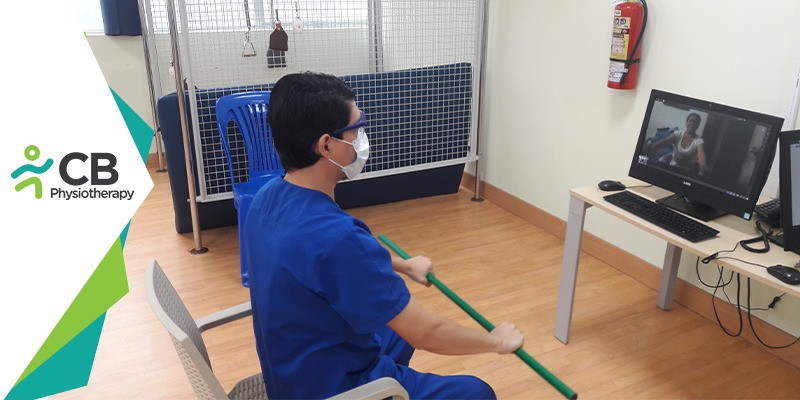Undoubtedly the Covid-19 pandemic has posed many challenges all over the world. It has impacted all aspects of our lives, especially health care delivery. The mode for rendering healthcare services has been altered to protect healthcare workers and patients preventing the risk of disease transmission. The pandemic has hampered the process of providing rehabilitation to patients, by limiting the quantity and type of patients treated. The delivery of rehabilitation in many settings has changed drastically, altering the way of imparting rehabilitation. Telerehabilitation or remote rehabilitation is a new way and a great example to use the power of technology to connect to people across the world. Through telerehabilitation, treatment can be implemented remotely without the physical therapists and patient meeting in person. Through Telerehabilitation the therapist can safely provide Physiotherapy Rehabilitation for COVID-19 patients and also for other patients with Musculoskeletal, Neurological, and Cardiopulmonary problems. In this blog we will decide why and how we implement telerehabilitation services:
- Telerehabilitation is a form of remote rehabilitation using the internet, smartphone applications, laptops, telephones, video consultation, text messaging, email, and social media. In particular, video consultations have the advantage that patients and health professionals can see each other, and the patient can get constant feedback reducing his/her anxiety, and leading to greater understanding and mutual trust.
- A physiotherapist can demonstrate exercises and give an educational presentation to several patients via video consultations.
- Telerehabilitation can also be used for sharing written materials, presentations, and films through social media
- Text messaging and email can be used for motivational and short educational messages and videos to provide quick feedback.
- The treatment through telerehabilitation is equally effective as in rehabilitation centers, in terms of improving motor, language, and cognitive functions.
- Tele-rehabilitation helps to continue the treatment program while protecting both patients and professionals.
- Physical therapy includes evaluation, assessment, monitoring, prevention, intervention, supervision, education, consultation, and coaching.
- The good thing about telerehabilitation is that the patients can avail the treatment in their comfortable and safe home environment and thus avoid social interaction.
- It also helps to keep up with the patients who were not able to continue their treatment due to the lockdown. Helps to maintain the functionality that they had achieved in the clinic, to improve their mobility, and minimize deterioration.
- Telerehab helps in home-based supervised exercise training as the physical therapist keeps a track of the patient's progress thus keeping the patient fully engaged and motivated with their exercises, as a result, the patient shows improvement in exercise performance.
- During the time of lockdown, the patients are worried about not seeing anyone due to social distancing, but through telerehabilitation, the therapist can communicate with them making sure that they are doing the exercises and also having friendly chat with them. Thus it overall improves their mental health
- If the patient doesn't see the therapist for long they usually stop doing exercises but through tele rehab they build anticipation, which can also enhance the patient’s self-management skills.
- Telerehab improves treatment adherence, improves the patient’s physical and mental function, and allows the physical therapist to provide the same quality care face-to-face.
- Tele-rehabilitation can also reduce healthcare costs, and restricts patient travel which is a major concern during the times of COVID-19.
Stay home, Stay safe and Stay healthy!

